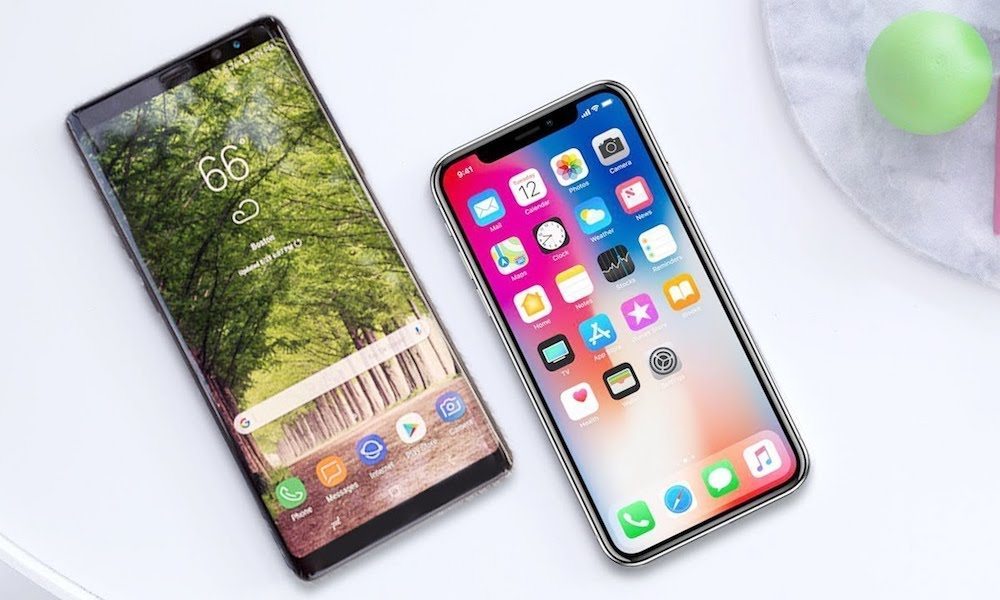Flagship Showdown: Galaxy Note 8 vs iPhone X Comparison

Toggle Dark Mode
From unveiling it ahead of Apple’s announcement to setting its price near the $1,000 mark, Samsung obviously wants the Galaxy Note 8 to be an iPhone X killer. But will it turn out to be? The Galaxy Note 8 and the iPhone X are undoubtedly both gorgeous, top-tier flagships.
If you buy either, you’ll be buying the best in smartphone technology. But when it comes to which of the two you should buy, there are a lot of things to consider.
Display
- The iPhone X sports an all-screen design with no Home button. That results in a large 5.8-inch display size. The display itself is an OLED, a first for an iPhone device, and it packs in an impressive resolution and pixel density: 2,436 x 1,125 at 458ppi.
- The Galaxy Note 8, on the other hand, does have a larger display. It’s a 6.3-inch Super AMOLED. And it manages to beat out Apple’s handset in terms of resolution and pixel density: 2,960 x 1,440 at 522ppi.
You could argue that the iPhone X manages to use its form factor more efficiently, in terms of space. But that brings us to our next category.
Form Factor
- The iPhone X is roughly the same size as its predecessor smartphones. It measures 143.6 x 70.9 x 7.7mm and weighs just about 174 grams. Apple was also a bit more daring in the bezel design, wrapping the display around the top sensor notch.
- The Galaxy Note 8 is a big smartphone. Indeed, it’s a phablet, and bigger in every dimension. It measures 162.5 x 74.8 x 8.6mm and weighs about 195 grams. It retains a small top and bottom bezel, but its display curves at the sides.
Ergonomically, the Note 8 just isn’t going to be held in the hand as nicely as the iPhone X — particularly for smaller-handed individuals. Even if you’re a fan of bigger phones, many people have complained about the placement of the fingerprint sensor on the rear of Samsung smartphones. It’s hard to get to with such a large device, especially with the Note 8’s squared edges. It makes the screen-to-body ratio of the iPhone X all the more impressive.
Processing Power
- The iPhone X comes equipped with Apple’s A11 Bionic CPU with a built-in neural interface. There’s currently no RAM information available for the device.
- The Galaxy Note 8 sports Qualcomm’s latest and greatest, the Snapdragon 835, in the U.S. It boasts 6GB of RAM.
As far as processing power, recent benchmark testing shows that the A11 Bionic blows the Snapdragon 835 out of the water. Apple devices are typically more efficient with their memory, and unlike Android devices, Apple-designed chips are optimized to just work better with iOS. The Galaxy Note 8 is fast, but the iPhone X will likely be on another level of performance.
Camera
- The iPhone X has a 12-megapixel, dual-lens camera module. Both lenses feature optical image stabilization. It also has a 7-megapixel front-facing camera with Portrait Mode support. More than that, the front-facing camera uses Apple’s new TrueDepth and infrared technology.
- The Galaxy Note 8 also has a 12MP, dual-lens camera module with both lenses sporting OIS. It sports an 8MP front-facing camera.
The two phones are pretty evenly matched when it comes to rear-facing cameras. But the Galaxy Note 8’s selfie camera can’t hold a candle to Apple’s depth-sensing and infrared front-facing system. Additionally, the Galaxy Note 8’s “Portrait Mode” only works on its rear-facing camera. The iPhone X will allow Portrait Mode for both its front- and rear-facing cameras.
Additional Considerations
iPhone X
- The iPhone X features an advanced facial recognition system called Face ID in lieu of a fingerprint sensor.
- The iPhone X features gesture-based controls that replace the Home button.
- iOS 11 will also feature ARKit, the first completely smartphone-based augmented reality platform. The iPhone X will be tailored for AR.
- It also runs on iOS, and that’s a huge plus for many and a drawback for others.
- It’s IP67 rated for water resistance.
Galaxy Note 8
- The Galaxy Note 8 will feature its own built-in stylus, which will be useful to some and useless to others.
- The Note 8 features virtual iterations of its home, back and multitasking buttons.
- The Note 8 features expandable storage via MicroSD.
- It also runs on Android, which is obviously more customizable but less optimized to the device’s hardware.
- It beats out the iPhone in water resistance with an IP68 rating.
Both devices feature digital assistants, but you could argue that Siri has a bit more polish and sheen. The battery life should also be fairly evenly matched between the two devices.
Price
The iPhone X will start at $999 for the 64GB storage configuration.
The Galaxy Note 8 will retail for $930 for the 64GB configuration.
Conclusion
- The iPhone X will be speedier and much more powerful, it will also have a better front-facing camera, and manages to be more efficient in its screen-to-body ratio.
- The Note 8 is, of course, a phablet with a bigger display, but there’s a tradeoff in ergonomics. It sports expandable storage and a built-in stylus, two features not seen on any iPhone thus far.
On one hand, if you’re an Android devotee or you’re looking for a tablet-smartphone hybrid, the Galaxy Note 8 may be up your alley. But it’s hard to not give the edge to the iPhone X. Even if you’re not an Apple “fanboy,” the device is undoubtedly a leap forward in smartphone tech. In the future, most smartphones will probably sport some form of gesture-based control, AR and facial recognition.






